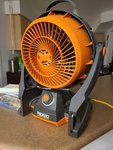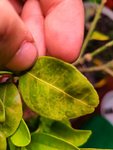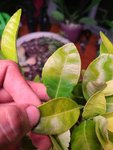If all they have is the light (I don't see any nearby windows in your pic) they probably need way more than 6 hours!
What you're really after is "integrated flux" or the total number of photons that strike a leaf.
Hopefully, this doesn't come across as too condescending and I may be oversimplifying some of the details, but basically, if the optimal light exposure for the plant is 1000 photons (made up number!) those can be received in many ways. The plant can receive all 1000 at once...then be dark the rest of the day. It can receive 100/hour for 10 hours and be dark the rest of the day, receive 42 per hour for 24 hours and never be dark, etc...
All at once is not good: leaf burn! 24 hours constant is also not good...but not as bad as you might think. Plants do need darkness for the "dark reaction" part of making sugars and day length can influence behaviors though many behaviors we associate with day length are actually temperature responses. Anyway, the point is that somewhere between leaf burn and constant exposure is a happy place most plants can tolerate if it means getting a more optimal number of photons.
I have a flux meter (instantaneous intensity only...no consideration for PAR or integrated flux like a PPFD meter). I've used it to measure and what intensity my windows lose. It's about 50% That is if I set my meter on the floor just inside my sliding glass door, then take a reading with the door closed and another with it open. My windows cut out ~50% of the measurable sunlight. A rough back of the envelop calculation says that if my plants get 6 hours of direct light outside the window, they need 12 hours to get the same number of photons inside the window. The same basic _very rough_ calculation can tell you roughly how long to run lights. For LED systems that are blue/red only, the calculation is even rougher because flux doesn't care about color. 1000lux in blue/red light are are more efficient for photosynthesis than 1000lux spread across white light.
In practice, I took some rough guesses and tried it for a while and observed my plants. I had a coastal redwood that I bleached entirely of green early last fall because of too long of light. It came back fine in the spring but I stopped running those lights for nearly as long as I calculated they might need to run!
Considerations on the "how long is too long" get tricky depending on whether or not your plants are triggered by day length at all. I see you have a phal. Phals are usually considered "short day" plants that need longer nights to bloom. That's where things get tricky. Many plants...phals in particular...aren't trigger by day length so much as by temperature. I have phals grown solely under LEDs for 12-14 hours per day as the only source of light. They bloom fine as long as I give them cool enough nights. It doesn't seem to bother them that the light cycle hasn't changed at all...just that the temperature cycle has.
Succulents are great at signaling if they are happy with the amount of light! If you can run your lights long enough that your jade are lighter green, do it! If you can run them long enough to tinge any of your succulents with those reds and oranges, do it! At least til the point that your citrus leaves start looking too pale. If your succulents are starting to etoliate and/or darken in color, it's doubtful you're giving enough light to the citrus.
Honestly, since you have the succulents as a canary of sorts, I'd error on running the lights too long and cut back if you start noticing problems. LEDs run cool and your house is likely reasonably cool. You're not very likely to burn anything and if you do, it will be the crown first and easy to catch and adjust for. Too little light leads to long slow deaths that are sometimes hard to notice coming




